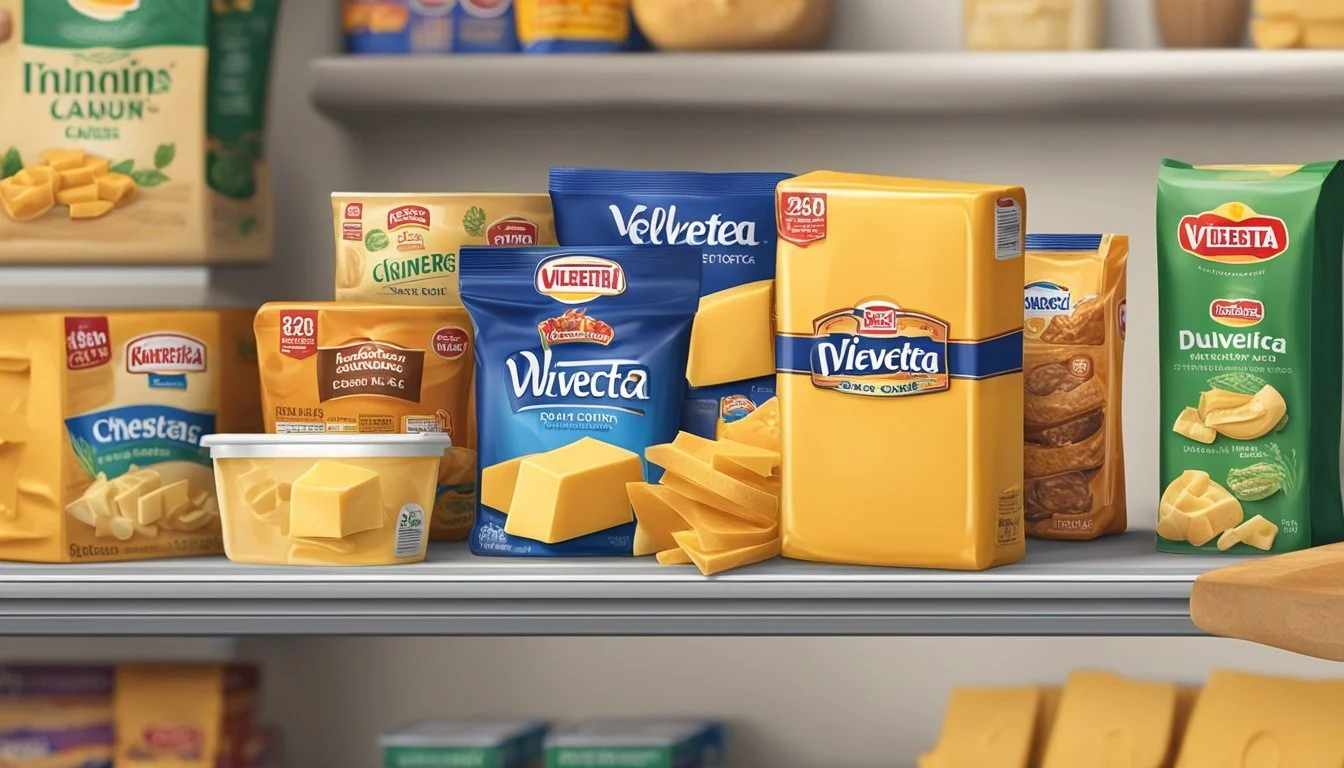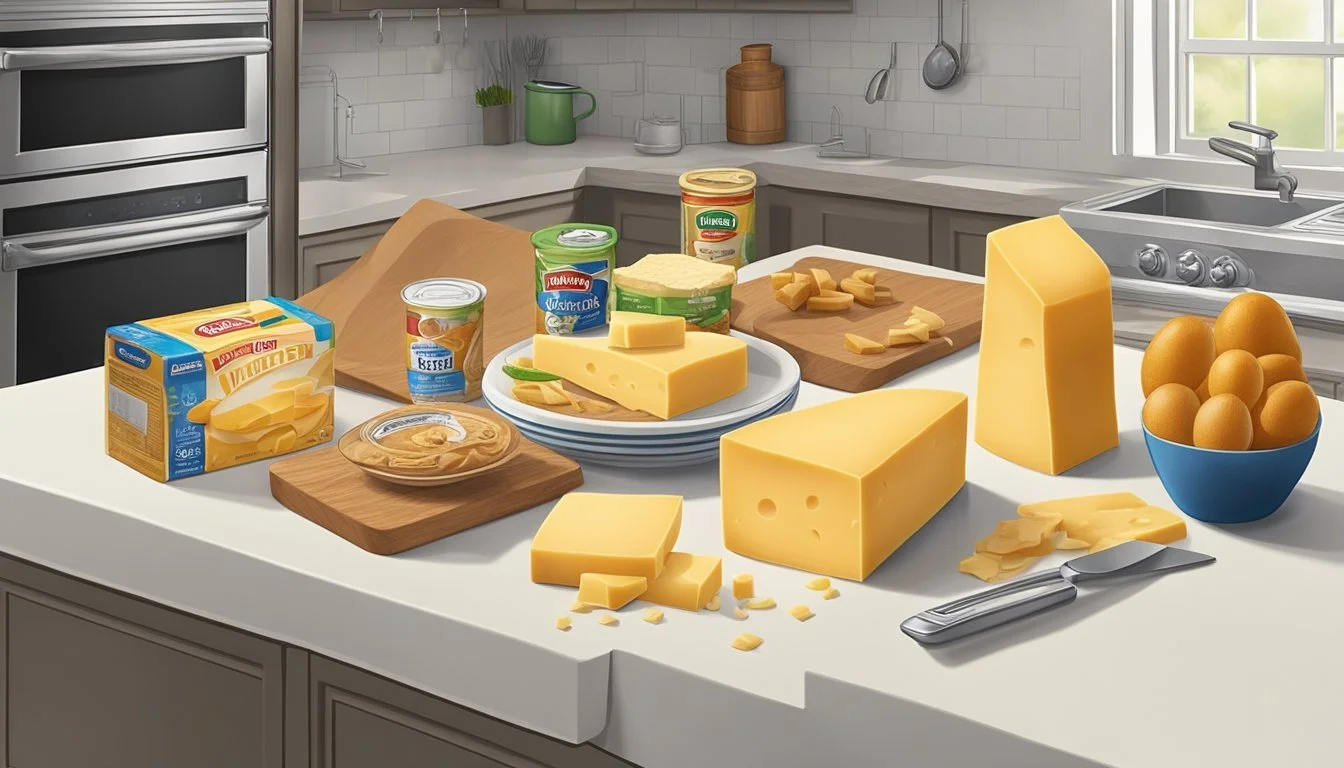Does Velveeta Go Bad?
Understanding Shelf Life and Storage Tips
Velveeta is a brand of processed cheese product that boasts a longer shelf life than regular cheese due to its preservatives and processing methods. However, like all food products, it can eventually spoil. The shelf life of Velveeta cheese varies depending on whether it is opened or unopened, and how it is stored. While it may remain safe to consume beyond the expiration date if stored correctly, it’s important to know the signs of spoilage to prevent food-related illness.
Changes in color and texture are key indicators that Velveeta cheese may be going bad. Fresh Velveeta typically has a creamy yellow appearance and a smooth, velvety texture. If the cheese exhibits any mold, discoloration, or changes in texture, it should not be consumed. Once opened, Velveeta should be kept refrigerated and used within the recommended time frame for optimal freshness and taste.
Unopened, a package of Velveeta can last for several months, with some sources extending this to six months past the printed expiration date. Proper storage conditions involve keeping it in a cool, dry place, or refrigerated to prolong its shelf life. If refrigerated, it should be stored at or below 40°F to preserve its quality. Once opened, Velveeta generally remains in good condition for up to a month when refrigerated and handled properly.
Overview of Velveeta Cheese
Velveeta is a processed cheese product known for its smooth texture and meltability. It has become a staple in many American households, particularly favored for its use in recipes like dips and macaroni and cheese.
History and Development
Velveeta was first developed in the early 20th century by Emil Frey of the Monroe Cheese Company. Kraft Foods later acquired the brand and has since been manufacturing it. The product was marketed as a nutritious form of cheese, known for its extended shelf life and versatility in various dishes.
Composition and Nutrition
Velveeta's composition diverges from traditional cheese. Its primary ingredients include milk protein concentrate, whey protein concentrate, fat, sodium phosphate, and sodium citrate. Its creamy texture is a result of these additives, which are combined to create a stable product that melts evenly.
In terms of nutrition, a single serving of Velveeta is calorie-dense and provides a significant amount of total fat and sodium content. While it does contain a certain level of protein content from the milk ingredients, Velveeta is not considered a superfood. It is a source of milkfat and dairy product nutrients, yet its high sodium and fat levels may raise health concerns when consumed in large quantities.
Nutrient Amount per serving Calories 70 Total Fat 6g Sodium 410mg Protein 5g
Despite the added ingredients, Velveeta fulfills a role in many American kitchens with its unique texture and flavor.
Shelf Life and Storage
Understanding the shelf life of Velveeta and adhering to proper storage methods ensures the product remains safe to consume and maintains its quality. This section breaks down the specifics for both unopened and opened packages, along with essential storage techniques and signs to recognize when the cheese may no longer be good to use.
Unopened Velveeta Shelf Life
Unopened Velveeta cheese, when stored under ideal conditions, has a shelf life of up to six months. Manufactured with preservatives such as sorbic acid, this processed cheese product is shelf-stable, designed for longevity prior to opening.
Opened Velveeta Shelf Life
Once opened, the shelf life of Velveeta cheese is significantly reduced. To preserve its freshness, opened Velveeta should be stored in the refrigerator and ideally consumed within eight weeks. Refrigeration slows down the process of spoilage by maintaining a consistent temperature.
Proper Storage Techniques
To maximize Velveeta cheese's shelf life:
Unopened: Store in a cool, dry place away from direct sunlight and heat sources.
Opened: Keep in an airtight container or wrap securely with plastic wrap to minimize exposure to air.
Refrigeration: Maintain a refrigerator temperature below 40°F (4°C) to ensure food safety.
Freezer: Freezing is not recommended, as it can affect the texture and cause freezer burn, diminishing the product's quality.
Signs of Spoilage
Identifying when Velveeta cheese has gone bad involves checking for:
Color: The cheese should maintain its original yellow hue; any discoloration can indicate spoilage.
Texture: If Velveeta appears dry, has a cracked surface, or shows signs of mold, it is not safe to consume.
Odor: An off or sour smell is a clear sign that the cheese should be discarded.
Culinary Uses of Velveeta
Velveeta cheese has become a staple in various recipes due to its melting properties and creamy texture. Here are ways to incorporate Velveeta into cooking, along with some classic recipes.
Cooking with Velveeta
When cooking with Velveeta, it should be noted that its creamy texture and ability to melt smoothly make it a preferred ingredient in many comfort foods. It's especially famous for its role in:
Mac and Cheese: The creaminess of Velveeta cheese lends itself perfectly to creating a rich and velvety cheese sauce for this classic dish.
Dips: Velveeta can be melted down to create a variety of warm, crowd-pleasing dips.
Nachos: For a quick and smooth cheese sauce, Velveeta can be melted and poured over nachos, often mixed with chili or salsa.
Classic Velveeta Recipes
Several recipes have stood the test of time and are particularly associated with Velveeta:
Spreads: Velveeta can be mixed with pimentos, mayonnaise, and other seasonings to make a spread for sandwiches or crackers.
Casseroles: Because Velveeta melts so evenly, it's a common ingredient in casseroles, contributing a gooey texture throughout the dish.
Sauces: It is the base of many creamy sauces, beyond mac and cheese, often blended with ingredients such as green chilies or ground beef for added flavor.
Safety and Quality
When considering the safety and quality of Velveeta cheese, it is crucial to evaluate its shelf life and the risks associated with consumption after spoilage. Velveeta is less prone to spoilage than traditional dairy cheeses due to its processing and preservatives, but proper storage and attention to spoilage signs are essential for consumption safety.
Health Considerations
For individuals with lactose intolerance, it's important to note that Velveeta contains dairy components and should be consumed with discretion to avoid digestive discomfort. While not a common allergen like some cheeses, Velveeta should be consumed consistent with individual health needs and with attention to the American Medical Association guidelines concerning processed foods.
Avoiding Foodborne Illness
To prevent foodborne illness, one must ensure Velveeta cheese is free from mold and does not exhibit any signs of spoilage. The FDA recommends observing the following tips to maintain food safety:
Keep Velveeta refrigerated at or below 40°F.
Consume the product within 2 to 3 weeks after opening.
Look for changes in texture and color that might indicate spoilage.
Food safety is paramount, and unlike Cheez Whiz, another processed cheese product, once Velveeta shows signs of spoilage, including mold growth or an off smell, it should not be consumed to avoid the risk of bacteria-related illnesses.
The Science of Spoilage
Understanding the science of spoilage in dairy products such as Velveeta is crucial for maintaining food safety. Factors such as moisture content, milk protein structures, and exposure to bacteria all play roles in determining the shelf life of these items.
Factors Influencing Cheese Spoilage
Storage Temperature: Cheese spoilage is significantly influenced by storage conditions. Temperatures above refrigeration level (over 40°F) accelerate bacterial growth, thus increasing the chance of spoilage.
Presence of Preservatives: Velveeta contains preservatives like sodium that help inhibit bacterial growth and extend its shelf life.
Moisture Content: Higher moisture levels in dairy products provide an environment conducive to bacterial propagation, leading to spoilage.
Packaging Integrity: Proper packaging, such as sealed plastic wrap, helps protect cheese from contaminants and moisture, factors that contribute to spoilage.
Mold Growth in Dairy Products
Introduction of Spores: Mold spores may land on the surface of dairy products when exposed to air. These spores can germinate and lead to visible mold growth.
Moldy Environment: Dairy products kept in a mold-prone environment, perhaps due to cross-contamination from other moldy foods, are at an increased risk of developing mold.
Fat and Milk Protein: The high content of milk fat and protein in products like Velveeta provides nutrients that facilitate mold growth.
Changes in Cheese Consistency: Mold growth affects the flavor and texture of dairy products, causing them to become unappealing and potentially unsafe to consume.
Frequently Asked Questions
The shelf life of Velveeta cheese, its storage methods, and indicators of spoilage are common concerns for consumers.
Does Velveeta Cheese Go Bad
Yes, Velveeta cheese can go bad. Indicators of a spoiled product include a change in color, texture, or smell. One should look for a yellow color and a smooth texture in good quality Velveeta cheese. If the product has developed mold, exhibits an off smell, or the color appears altered, it is not safe to consume.
How to Store Velveeta Cheese
To ensure the longevity of Velveeta cheese, proper storage is essential. Unopened blocks should be stored in a cool, dry place such as a pantry. Once opened, the cheese needs to be wrapped in plastic wrap or sealed in an airtight container and refrigerated. Keeping the cheese at or below 40°F prevents spoilage and maintains quality.
How Long Does Velveeta Cheese Last
An unopened package of Velveeta can last up to six months when stored properly in a cool, dry place. Past the expiration date, Velveeta cheese can last for an additional two months if kept refrigerated. After opening, it should be consumed within 2 to 3 weeks to ensure the best quality.
Historical and Cultural Impact
Velveeta has had a significant role in shaping American culinary traditions, evolving from a simple cheese product to a staple item in kitchens across the United States.
Velveeta's Role in American Cuisine
Velveeta, with its trademark smooth and melty quality, has become an iconic element of American cuisine known for its versatility. It emerged as a pantry essential, often wrapped in aluminum foil to preserve its shelf life. During the Great Depression, it offered an affordable alternative to traditional cheddar cheese, becoming synonymous with comfort food. Its unique texture, thanks to milk protein concentrate and stabilizers, ensured its inclusion in a variety of dishes, from creamy dips to classic macaroni and cheese.
Monroe Cheese Company and Velveeta
The Monroe Cheese Company, under the innovation of Emil Frey, played a pivotal role in the development of Velveeta. Frey created a method to combine cheddar cheese scraps with whey and other dairy byproducts, producing a velvety-smooth cheese product. Velveeta was marketed as a healthy processed American cheese alternative rich in protein, leading to its widespread acceptance in households. Over time, it became valued for more than its nutritional aspects, but also as a symbol of American ingenuity in the food industry.





